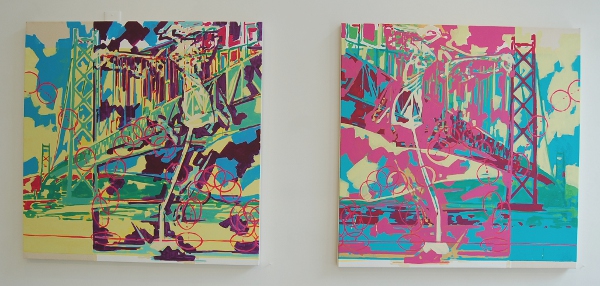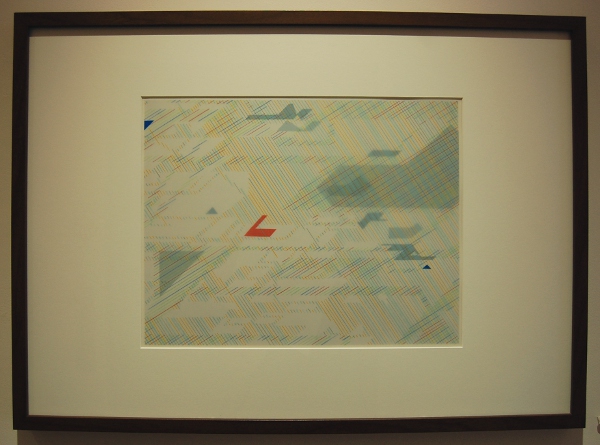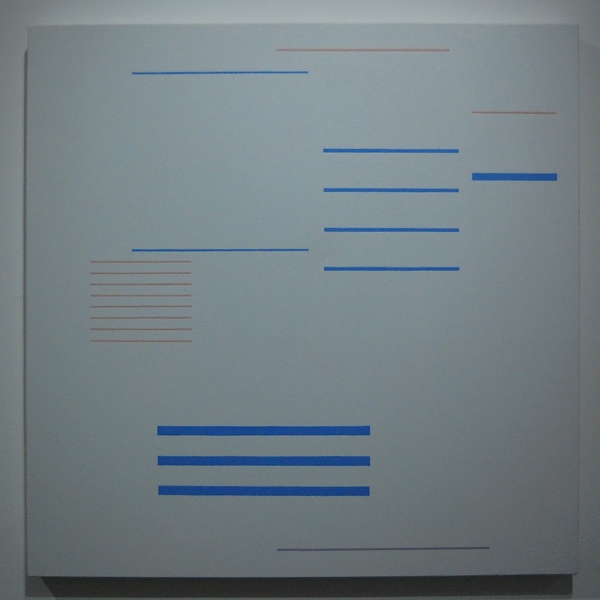
Role of abstraction analyzed at LG Tripp Gallery
What exactly is the role of abstraction in our contemporary world? This is one of the big questions being posed in the show “Documents: Abstraction, Landscape, Culture” at LG Tripp Gallery. The exhibit features artists Anthony Vega, Paul Fabozzi and Seonglan Kim Boyce, and makes no reservations in dissecting abstract art and its broad social contexts.
The viewer is immediately immersed in the vivid colors and layers of Anthony Vega upon entering the front of the gallery. To the left is a row of 20 individual acrylic-on-aluminum paintings, which make up the series “Elephant in the Room.” Obviously, the subject in most of these is an elephant, rendered in the thick outlines that dominate Vega’s work, but a kangaroo also manages to make an appearance here. While many times the background is indistinct, some recognizable, real-world locations are also noticeable including the Eiffel Towerand the Taj Mahal.
Around the rest of the space, Vega has larger canvases that generally incorporate more layers and less polished aluminum. Of specific interest are the not-quite-mirror images of a suspension bridge in a diptych, which wrangles with perspective as much as it does pattern. In the multiple angles of the bridge, the artist seems to be channeling the Cubists to some degree.
Surely it is no mistake that these painters were some of the 20th century’s boldest proponents of abstraction. With the power of flipped images having lost some of its luster in the face of media developments like Photoshop, Vega paints his scenes manually with thick patches of print-like color. It’s as if he’s both borrowing from and thumbing his nose at multiple artistic schools from the Impressionists to Pop Art and everything in between.
Paul Fabozzi toys with the interplay between lines and geometric forms in overlapping succession. Utilizing sheets of translucent Mylar and paper, Fabozzi constructs layered images which almost appear to have been etched or engraved. This illusion of a subtractive process gives them an alluring sense of texture. Some of the lower layers also become blurred due to the frosted nature of the plastic sheets, making the hard-edged forms seem hazy and distant. There is a surprising amount of depth in these works that is not evident until closer examination.
In the spirit of Suprematism and Kazimir Malevich, Seonglan Kim Boyce puts together deliberate compositions of lines and rectangles. The canvases are notably bare and straightforward compared to the other art in this show, and perhaps even a great deal of art in general. Boyce proves that the most simple-looking designs are many times the most challenging, if for no other reason than the viewer has very little to work with. Here, the parallel lines verge on nonobjective if it weren’t for their similarity to musical bars and staffs. In fact, the repetition and rhythm of Boyce’s art is practically the only bone the observer is thrown.
Abstraction often leaves topics open-ended and at the mercy of interpretation, and this show is no exception. The context of “Documents” at LG Tripp challenges notions of image-making and abstract representations in contemporary art and culture, and does so in a way that is historically relevant.
LG Tripp Gallery is located at 47-49 N. 2nd St, Philadelphia; 215.923.3110; lgtrippgallery.com
Recent Content
-
Artsarticle ·
-
Artsarticle ·
-
Artsarticle ·



